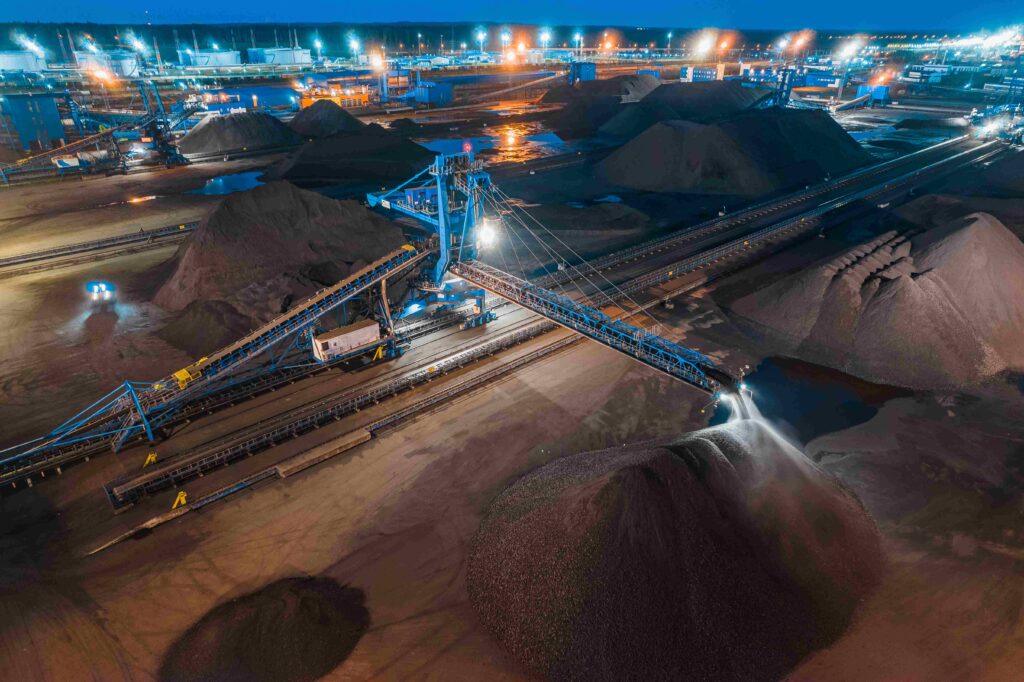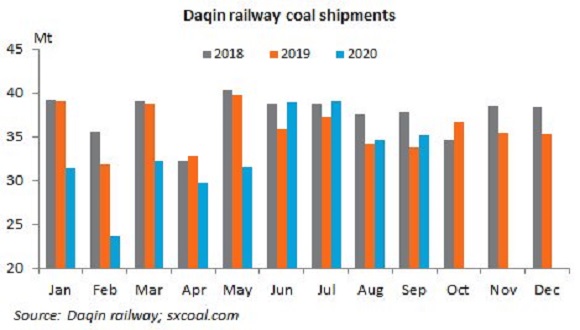

Over the past week, thermal coal indices on the European market adjusted below 120 USD/t under the pressure of falling gas prices. The long weekend for Easter also contributed to the decline in electricity costs and consumption.
Last weekend, Germany made a decision to offline and shut down 15 power plants with a combined capacity of 4.4 GW of coal (1.3 GW) and lignite (3.1 GW) in order to achieve climate neutrality, that was also due to reduced demand, lower electricity prices and increased RES generation, although some experts called that measure harmful to the economy. At the end of Q1 2024, coal-fired generation in Germany was down 26% to 28 TWh.
Gas quotations at the TTF hub dropped to 288 USD/1,000 m3 (-20 USD/1,000 m3 w-o-w). Storage facilities are still 60% full. Meanwhile, coal stocks at ARA terminals decreased to 5.99 mio t (-0.21 mio t w-o-w), falling below 6 mio t for the first time since the beginning of this year, following lower shipments and the resumption of re-exports to Mediterranean countries, including Turkey.
South African High-CV 6,000 broke through the 100 USD/t level, reaching a 5-month high on the back of high prices in Europe and disruption of coal supply chains from the US as a result of the Baltimore bridge collapse.
On April 2, all three railway lines towards Richards Bay Coal Terminal (RBCT) were locked because of the derailment of 4 locomotives and 6 railcars with coal. An investigation has been launched into the incident, with traffic expected to resume during the day. Meanwhile, weekly loadings to RBCT reached 1.2 mio t, the maximum for FY 2023/2024 (ending March 31). If this momentum continues, exports through RBCT may reach 60 mio t in FY 2024/2025. Loadings on the North Corridor line touched 1.4 mio t last week, surpassing last year’s high, recorded in June.
In China, spot prices for 5,500 NAR coal at the port of Qinhuangdao plunged by 4 USD/t to 117 USD/t, resulting from the downward trend in the Chinese domestic market, caused by weakening demand and increasing stockpiles. Deteriorating conditions are confirmed by price cuts by Shenhua and other Chinese coal companies in Inner Mongolia and Shanxi provinces. Negative expectations were also fueled by declining quotes in tenders across the south of the country.
Inventories at the 6 largest coastal thermal power plants totaled 13.2 mio t (+0.2 mio t w-o-w), while consumption fell from 758 kt/day to 733 kt/day. Stocks at the 9 largest ports rose to 23.7 mio t (+0.3 mio t w-o-w).
Indonesian 5,900 GAR remained virtually flat at 92 USD/t amid high stocks in India and China. Demand for Indonesian material from Chinese buyers is also weakening with upcoming Qingming (Ancestor’s Day) holiday weekend in China during April 4-6.
Australian High-CV 6,000 corrected down to the level of 125 USD/t, after the gains a week earlier, because of lower quotes in Europe, a continued downturn in Chinese domestic prices and growing competition in South Korea, where Colombian coal supplies are on the rise.
Additional negative factor was the biggest earthquake of magnitude 7.3 in Taiwan in the last 25 years, prompting power company Taipower to temporarily shut down 6 power plants for safety reasons, including 2 coal-fired Taichung power plants with capacity of 1.2 GW. The 1.3GW Heping coal-fired power plant was also halted.
Currently, the timeline for restarting the power plants remains unknown. However, the operation of three nuclear power plants continues, as they were not affected by the earthquake.
Australian HCC metallurgical coal quotations dipped below 230 USD/t, remaining in a downtrend on high supply and limited demand. Further pressure on indices is also being brought on by another reduction in Chinese coke prices, which is expected next week. Moreover, ahead of the rainy season in India, many steel producers have already ensured sufficient stocks and are finalizing their purchasing activity.
Source: CAA













